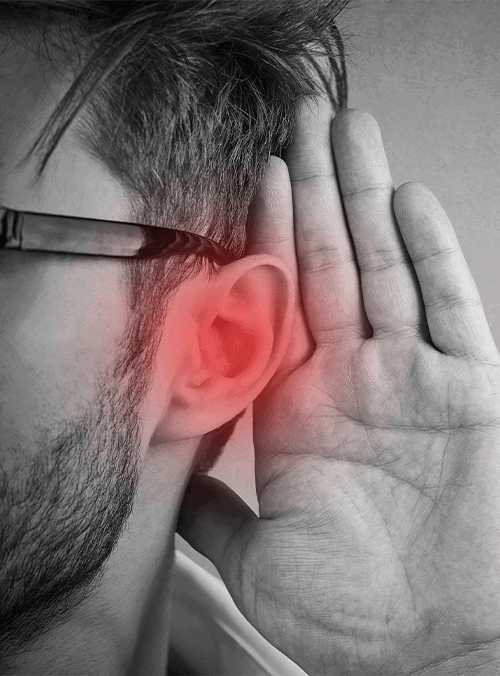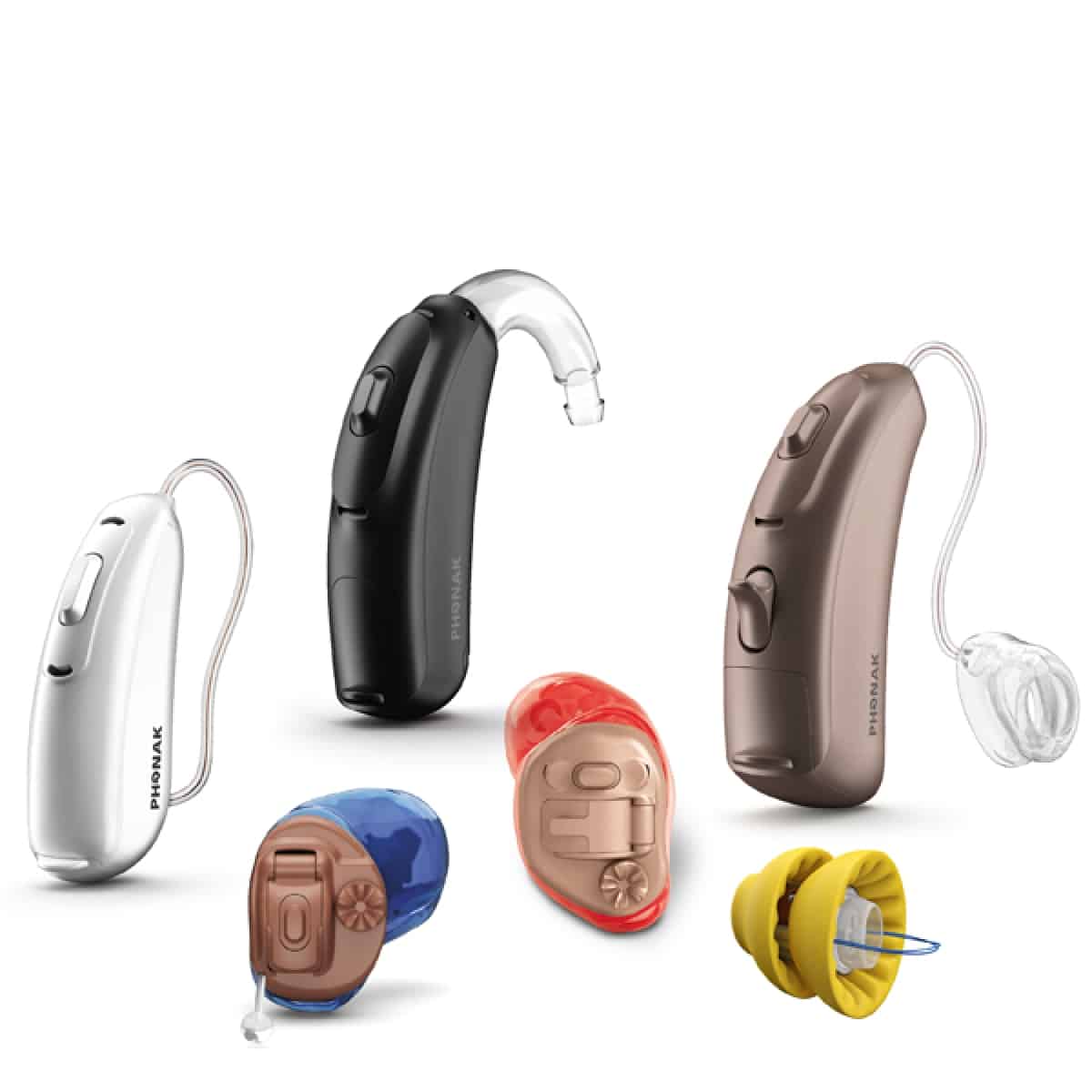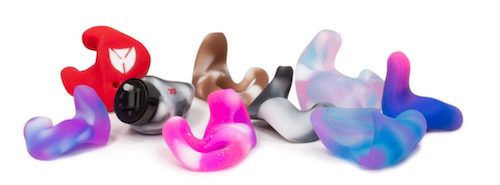Hearing and Balance
As experts in conditions that affect the ears, nose and throat, the physicians of Suncoast ENT Surgical Specialists offer services to protect and enhance your hearing. We also treat conditions that affect the delicate structures inside your ears that work together to maintain your balance.
While your family physician has the fundamental knowledge to provide basic treatments for ears, hearing and balance, many conditions require a greater in-depth knowledge, skill and specialized training. The ENT physicians at Suncoast ENT Surgical Specialists are experienced with the following:
Audiology and Hearing Testing
Audiological Evaluations
Pediatric Hearing Assessment
Tympanometry
Audiology FAQ
Tinnitus
Also known as ringing in the ear, tinnitus is an affliction where one hears, either intermittently or continuously, a series of sounds including ringing, hissing, and/or buzzing in the ears. The noise can also vary in degrees of loudness.
An estimated 50,000,000 adults in the United States suffer from tinnitus, making it one of the most common afflictions in the United States today. In mild cases of tinnitus, it can simply be an annoyance. In the most severe cases, however, it can actually interfere with everyday life. A person who suffers from severe tinnitus will suffer from relationship interference, difficulty concentrating and sleeping, and, as a result of these afflictions, psychological distress.

Rather than being considered a disease, tinnitus is actually a symptom of a larger neurological problem. While it may occur as a standalone symptom, it may also occur in conjunction with vertigo, hearing loss or pressure in the ear.
Tinnitus is described with two types:
- Subjective Tinnitus -very common, where the patient perceives the tinnitus noise all on their own
- Objective Tinnitus -far more uncommon, where both the patient and other listeners can perceive the tinnitus noise
Ear Infections
Middle Ear Infections in Children
Middle Ear Infections in Adults
Outer Ear Infections
Meniere’s Disease
Meniere’s disease, which is also known as idiopathic endolymphatic hydrops, is a disorder affecting the inner ear marked by dizziness, vertigo, fatigue and hearing loss. The disorder is among the most common culprits for dizziness caused by inner ear problems.
A single ear is involved in many instances, but in around 15% of cases, the problem involves both ears. Meniere’s disease normally occurs in people between 20 and 50 years of age, and the risk is similar for men and women. Because Meniere’s disease has such a significant impact on quality of life, Suncoast ENT Surgical Specialists offer advanced treatments for the condition.
Vertigo (Dizziness)

What Is Vertigo?
What Is Dizziness?
Dizziness is a term used to describe lightheadedness or to feel faint, weak and unsteady. Vertigo is the dizziness that creates the sensation that you or your surroundings are moving or spinning.
Dizziness ranks behind fatigue and chest for the top reasons that adults visit their doctors. Experiencing frequent dizzy spells or constant dizziness may affect your level of productivity, but it is rarely a serious, life-threatening condition. The treatment for dizziness is dependent upon your symptoms and the cause of the condition. The treatments are usually effective.
The Anatomy of Balance
Common Balance Disorders
Some of the more common balance disorders include Benign Paroxysmal Positional Vertigo (BPPV). BPPV is the result of calcium crystals in the semicircular canals that move with any change in head position. Another balance disorder is Ménière’s disease, a condition that is caused by abnormal levels of fluid in the ears. Labyrinthitis is also a common disorder that causes irritation and swelling of the inner ear.
The types of treatment used depend on the causes of the vertigo or dizziness. Some remedies include medications (sedatives, antibiotics, steroids, and antihistamines), balance retraining exercises (vestibular rehabilitation), surgery, physical therapy and lifestyle changes (changes in diet, avoiding alcohol and nicotine).
Vertigo Diagnosis
Ear Tube Placement
The Eustachian tube functions as the middle ear’s pressure relief valve. Problems with the Eustachian tube can lead to pressure buildup of fluid inside the middle ear, which may lead to chronic ear infections, hearing loss, and problems with speech development and balance. Bilateral Myringotomy and Tubes, or BMT, may be recommended if the condition is unresponsive to other medical intervention.
The BMT procedure involves the creation of a tiny opening inside the eardrum to help fluid drain, resulting in the relief of ear pressure. A tube is inserted into the opening to keep it open. The tube stays in place for six months or more and normally falls out on its own, allowing the Eustachian tube to adjust for normal drainage. When the tubes are present, hearing will improve, and fewer ear infections will occur. The procedure is often used in treating children with middle ear infections that do not respond to treatment.
Hearing Aids
Hearing aids have long been on the forefront of treating hearing loss. Modern hearing aids are discreet, powerful devices that amplify and enhance incoming sound to make hearing and speech comprehension easier. Hearing aids help you keep up with the world around you and relieve cognitive stress caused by hearing loss
Anyone that is experiencing hearing loss in one or both of their ears should take a closer look at the advantages of using hearing aids.
Hearing Aid FAQ
Hearing Aid Repair and Service
Hearing aids come without lifetime guarantees. As with all things, some wear and tear is to be expected. Instead of automatically replacing your damaged hearing aids, bring them to Suncoast ENT Surgical Specialists.
Common hearing aid repairs involve replacing damaged parts, cleaning, and testing the device. Sometimes, if the hearing aid is old or extremely damaged, repairs may involve the faceplate or circuit board. The cost varies depending upon the extent of the repair and warranty coverage. Repairs tend to be more expensive when the hearing aid is over five years old.
In some cases damage or age, Suncoast ENT can help you evaluate the cost benefit of repairing versus replacing your hearing aid. While some devices may be broken beyond repair, we are always ready to connect you with hearing solutions.
Common Hearing Aid Troubleshooting
You may be able to diagnose or even repair your own hearing aid if the situation is not too difficult. There are a number of fixes that you can attempt at home:
- Replacing the battery
- Cleaning the hearing aid
- Removing and reinserting the hearing aid
- Replacing the wax filter
- Opening and closing the battery compartment
- Checking the input settings
If you have tried everything you know how to do, but your hearing aid still does not work, contact us so that we can evaluate it and investigate other options regarding your hearing aid repair.
Hearing Aid Brands
Custom Ear Protection
Hearing loss is a risk for people working in many industries, including airplane pilots, musicians, medical professionals and factory workers. It can also affect those who engage in loud activities such as motorcycle riding and target shooting. In any of these scenarios, using hearing protection can make all the difference in preventing hearing loss.
We recommend custom ear protection for those who are at risk for hearing loss due to environmental factors. While the ear plugs found in many retail stores provide some hearing protection, custom earplugs and earmolds are the way to go if you’re looking for maximum protection. Custom earplugs and earmolds are also more comfortable to wear because they are designed to fit your ears.
Custom hearing protection can assist many people at risk for loud noise exposure including:
Truck drivers
- Musicians, DJs and concertgoers
- Industrial employees
- Construction crews
- Medical personnel
- Motorcycle riders
- Referees, coaches and athletes
- Airline employees
- Band instructors
- Recording engineers
- Sounds crews
Mastoidectomy
Middle ear infections that are resistant to antibiotic treatments may stem from a condition related to the mastoid bone of the ear. A mastoidectomy is the surgical removal of an infected portion of the mastoid bone when other medical treatment is not effective.
The need for this medical procedure is a rare occurrence today because of antibiotic treatment. Most often, a mastoidectomy is performed on children who have a high frequency of middle ear infections.
Tympanoplasty
Eardrum perforation is a hole in the eardrum that is typically the result of a middle ear infection. It can also be caused by a sudden change in pressure due to a loud noise, flying in an airplane, or from an object being placed in the ear. If an object penetrates the eardrum, it also sometimes results in the fracturing of small bones within the inner ear called ossicles. Eardrum perforation most frequently affects children, as they tend to get more ear infections than adults.
Eardrum perforation is extremely painful and can cause hearing loss and bleeding from the ear. If the ossicles are broken, then hearing loss can be serious. To diagnose a perforation, a doctor uses a special instrument called an otoscope to look into the ear. If hearing loss is suspected, then a hearing test may be administered.
If the perforation is minor, then treatment is typically not necessary because the hole will close on its own within a few days. If an infection is lingering, then medication or ear drops may be prescribed to help clear it up before the hole closes. If it has been more than three months since the infection healed and the perforation is still not closed, then your doctor may consider fixing the hole through surgical treatment.
The reconstructive procedure performed to repair torn tympanic membranes or ossicles is called tympanoplasty. Tympanoplasty helps restore hearing, prevent middle ear infections and even treats some types of deafness. After taking into consideration your history of infections, age, overall health and certain other factors, your doctor will decide whether or not tympanoplasty is the right choice for you.



 Truck drivers
Truck drivers